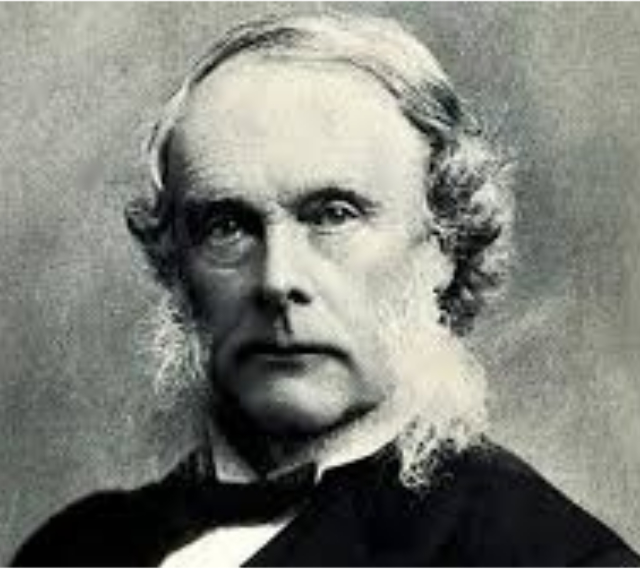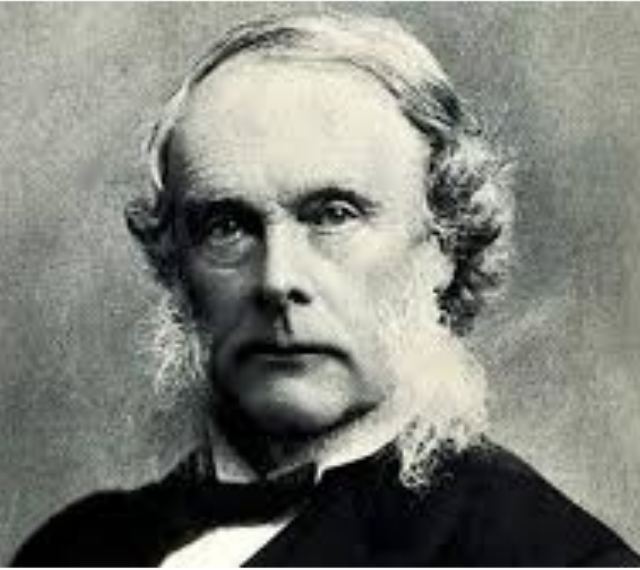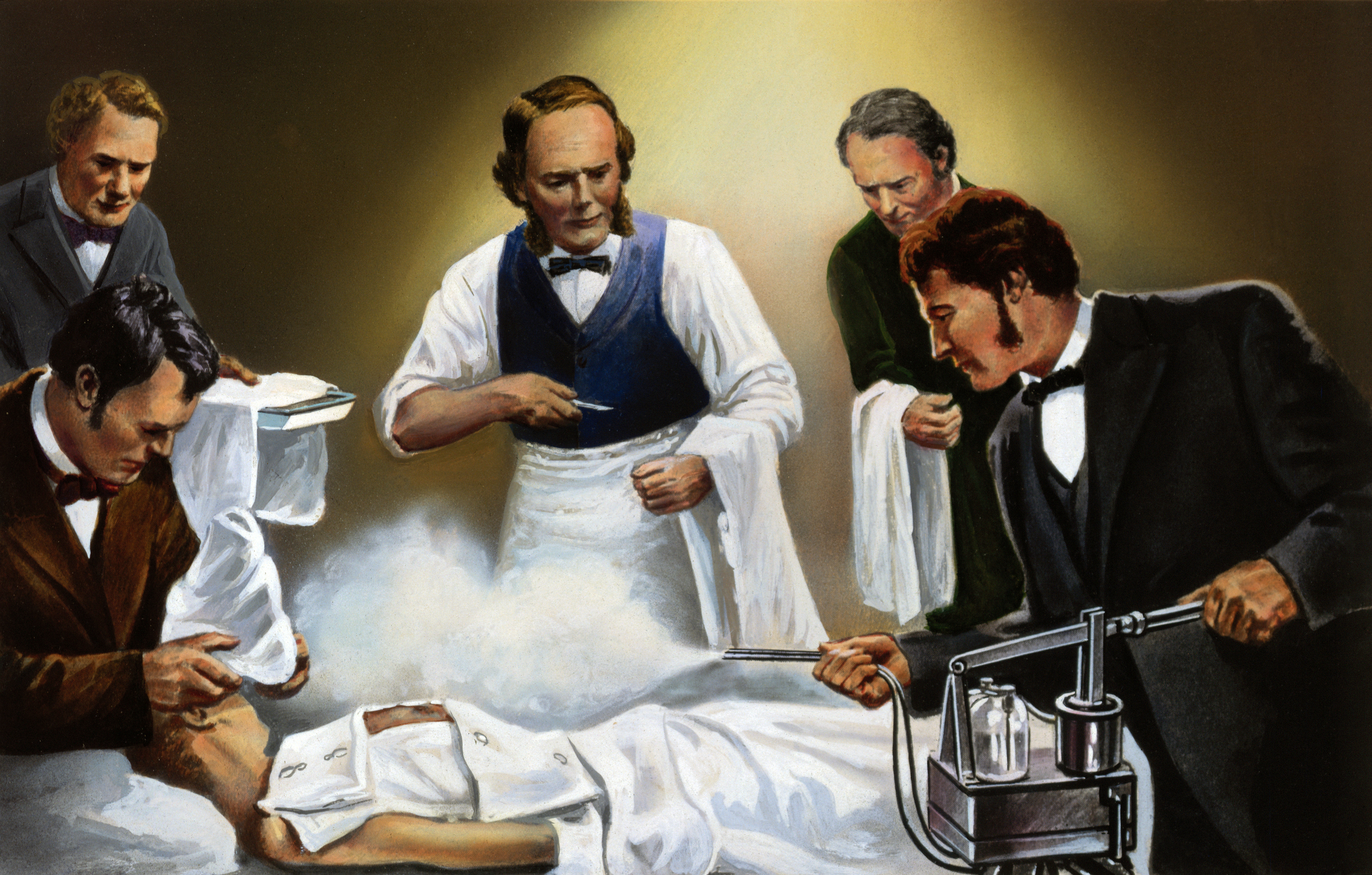
On March 16, 1867, Joseph Lister published an article for the first time, on the topic of antiseptic treatment of wounds in the famous The Lancet magazine. Since then, millions of people have been saved.
At the time, there was no practice of washing hands between two surgeries, and surgeons thought that the more blood is on them, the more successful they were during the surgery.
Born in 1827, Joseph Lister was a British surgeon and a pioneer of antiseptic surgery. He is famous for introducing the use of carbolic acid, or phenol, to sterilize surgical instruments and clean wounds.
He was the one to realize that germs could cause infections and started using antiseptic techniques to prevent them. Lister developed a new surgical technique that involved washing hands and sterilizing surgical instruments before and after surgery.
Born in Upton, Essex, England, his father was a wine merchant. He grew up in a family that valued education and the pursuit of knowledge. Joseph attended the University College London. There, he studied medicine and surgery, graduating with honors in 1852.

After he completed his medical education, he began his practical work as an assistant at the Royal Infirmary in Edinburgh, Scotland. There, he was able to witness the devastating effects of post-operative infections.
At the time, people believed that infections were caused by bad air or miasma. And that the best way to prevent infections was to keep the room clean and well-ventilated. Yet, he was not convinced of that theory.
In 1865, he read an article by Louis Pasteur, a French chemist that talked about how microorganisms cause fermentation and putrefaction. This prompted Lister to think and explore, and believe that microorganisms can be responsible for infections. He began experimenting with different antiseptics to see if they can kill bacteria.
Eventually, Lister settled on carbolic acid, phenol, as the most effective antiseptic. He began using it to sterilize surgical instruments and clean wounds.
His work had a profound impact on surgery and medicine. He was knighted in 1833 for his contributions to science and continued to work as a surgeon until his retirement in 1893. Lister passed away in February 1912 in Walmer, Kent, England. He was 84 at the time.
Before Joseph developed his surgical technique, surgeries around the world were dangerous. They were often deadly procedure. Surgeons at the time did not understand the importance of cleanliness and hygiene in preventing infections. As a result, patients would often die from post-operative infections.

Rooms were dirty and poorly ventilated, with little to no attention paid to cleanliness or the prevention of infection.
Surgical instruments were not sterilized between procedures. There was little to no understanding of how bacteria could spread from one patient to another.
That is why patients developed infections after surgery. There were few effective treatments for infections. Patients died, often within days or weeks after the surgery.
As we said before, Joseph developed a surgical technique for preventing infections. It involved using antiseptics to prevent infections during surgery. Here are all the steps part of the Lister technique.
- Before surgery, surgeons and assistants would thoroughly wash their hands and arms with soap and water
- Surgical instruments had to be washed and sterilized in carbolic acid solution to kill bacteria
- Operating room had to be washed down with carbolic acid solution to kill any bacteria present in the air
- During the surgery, the wound was irrigated with carbolic acid solution to kill any bacteria that might be present
- Following the surgery, the wound was dressed with a carbolic acid-soaked dressing to prevent any bacterial growth

His technique was a major breakthrough in surgery, and significantly reduced the incidence of post-operative infections. His methods are still being used today. Yes, they have been refined and improved over time, but the step-by-step process is the same.
It is not possible to estimate exactly how many lives Joseph saved with his pioneering work. But it is millions. We cannot ignore his profound impact on the field of medicine and surgery as a whole. His work contributed to a significant reduction in the number of deaths from post-operative infections.
Before the introduction of his technique, 50% of patients who underwent major surgery would die from infections. Following the introduction of his method, the mortality rate dropped to 15%.
But his work also had a broader impact on medicine, contributing to greater understanding of the role of bacteria in causing disease in infection.

Charlotte Cleverley-Bisman contracted Meningococcal Septicaemia at the age of six months. Since then, she lives an extraordinary life.Because of the condition, doctors were f...
Did you know that during World War, vehicles in France became mobile X-ray units? Or that during WW1, there was a widespread use of treatments and vaccinations for deadly dis...
There are around 4 quadrillion quadrillion bacteria on Earth. Not all of them are bad. Some are good for our health. But the greatest danger to modern medicine nowadays is ...
Did you know that the average cruising speed of emergency helicopters is 120 miles per hour? That is all thanks to the exceptional engineering.Inside, these helicopters featu...